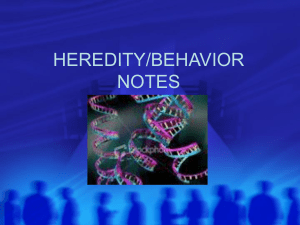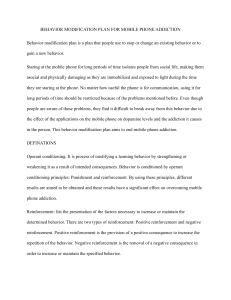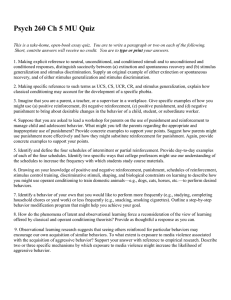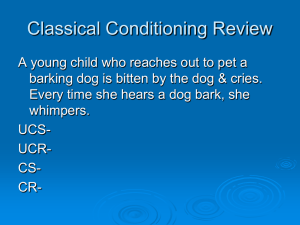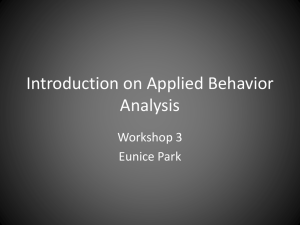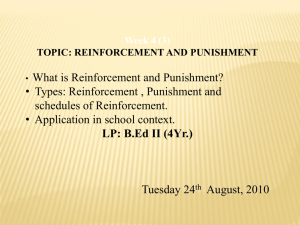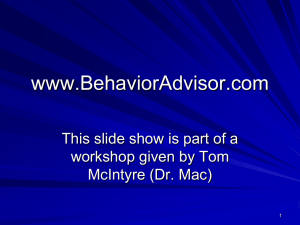(Textbook) Organizational Behavior, 10ed (Fred
advertisement
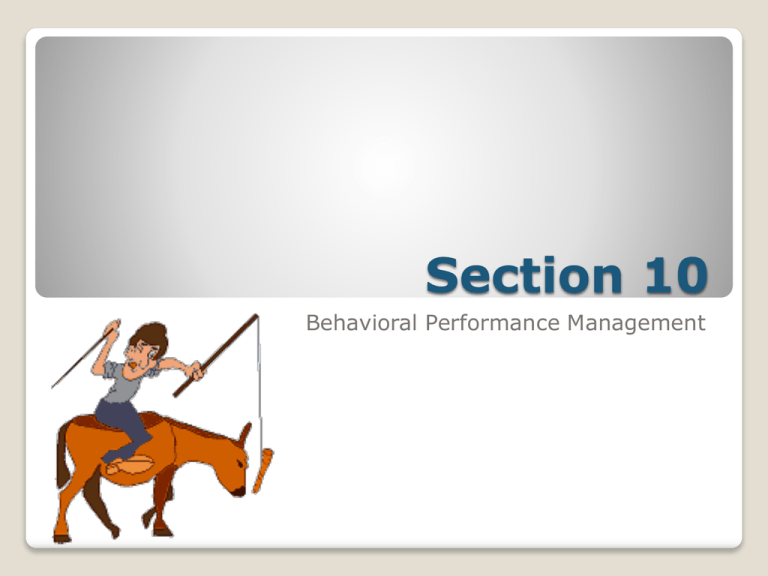
Section 10 Behavioral Performance Management Behavior Modification Techniques There are five categories of activities that can be addressed with behavior modification techniques: • Develop a new behavior • Strengthen a behavior • Maintain an established behavior • Stop inappropriate behavior • Modify emotional behavior We “operate” on the environment ◦ Alter behavior to maximize positive and minimize adverse consequences. Operant versus respondent behaviors Law of effect ◦ Likelihood that an operant behavior will be repeated depends on its consequences Behavior Modification (Continued) Learning Theory Background A-B-Cs of Behavior Modification Antecedents Behavior Consequences What happens before behavior What person says or does What happens After behavior Employee attends scheduled work Employee receives attendance bonus Example Attendance bonus system is announced Contingencies of Reinforcement Consequence is Introduced Behavior Increases/ Maintained Positive reinforcement Behavior Decreases Punishment No Consequence Consequence is Removed Negative reinforcement Extinction Punishment Principles of Learning: Reinforcement and Punishment (Continued) Principles of Learning: Reinforcement and Punishment The Use of Punishment Analysis of Money as a Reinforcer Issues of timing the reinforcer Nonfinancial Rewards ◦ ◦ ◦ ◦ The Meaning of Punishment Often used, rarely understood Administering Punishment Guidelines for Discipline ◦ Social Recognition and Attention ◦ Performance Feedback ◦ Need to Evaluate it (Continued) Schedules of Reinforcement Behaviors 1 2 3 4 5 6 7 8 9 Continuous Fixed ratio Variable ratio Time (Days) 1 2 3 4 5 6 7 8 9 10 11 12 13 14 15 16 Fixed interval Variable interval Behavioral Performance Management, or O. B. Mod. • Step 1: Identification of Performance Behaviors • Step 2: Measurement of the Behavior • Step 3: Functional Analysis of the Behavior • Step 4: Development of an Intervention Strategy – A Positive Reinforcement Strategy – A Punishment-Positive Reinforcement Strategy • Step 5: Evaluation to Ensure Performance Improvement A final note of caution Must Be Extremely Careful of What to Positively Reinforce (Fixed vs. Growth “Mindsets” from Dweck, 2006) ◦ Student subjects randomly reinforced for their ability in solving tasks (“you must be really smart as this”) led to a “fixed mindset.” ◦ Subsequently, they rejected taking on challenging new tasks ( fear of failure, not able to meet expectations). ◦ If they did try and failed, they took it personal, felt deficient and depressed. ◦ They did not enjoy, have fun, at subsequent tasks. ◦ Importantly, their performance decreased over time. ◦ Many( 40%) actually lied to others about their abilities. ◦ However, those randomly reinforced for their effort on tasks (“you must have worked really hard at this”) led to a “growth mindset” and the exact opposite results. Performance Absenteeism Turnover ◦ E.g., staffing firm study- praise and recognition Uses of O.B. Modification Questions

